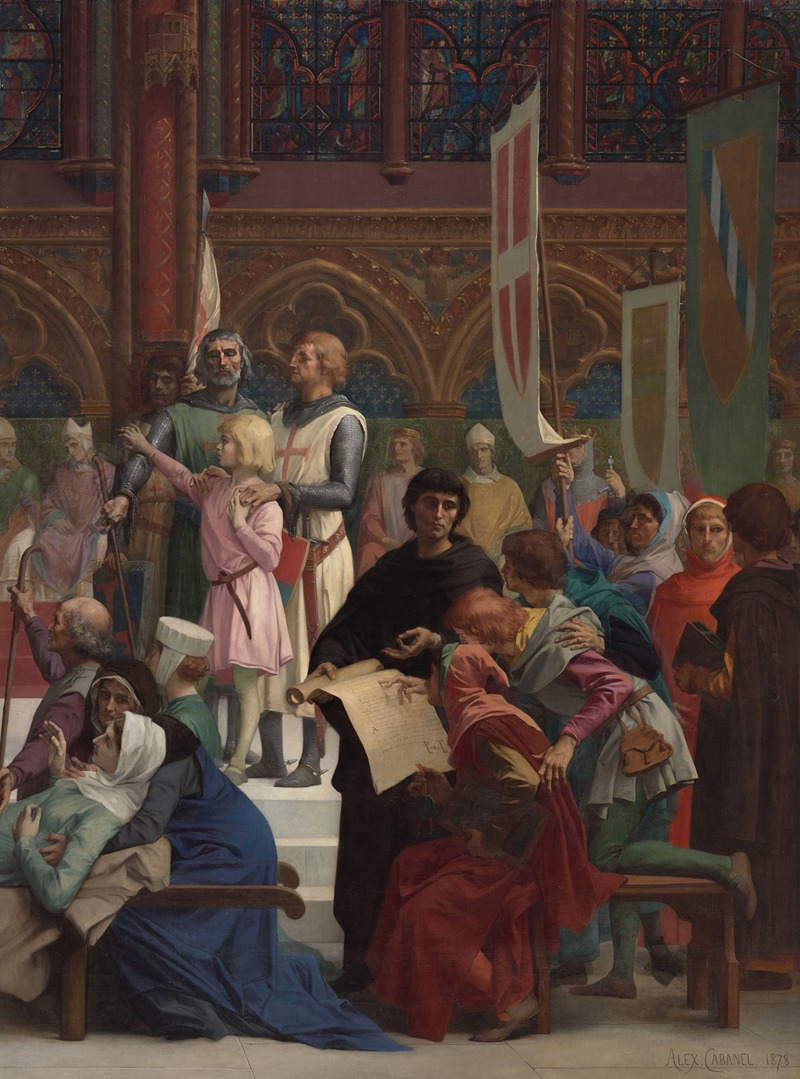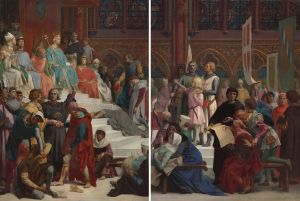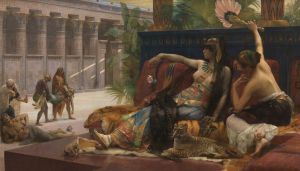
Saint Louis rendant la justice
A hand-painted replica of Alexandre Cabanel’s masterpiece Saint Louis rendant la justice, meticulously crafted by professional artists to capture the true essence of the original. Each piece is created with museum-quality canvas and rare mineral pigments, carefully painted by experienced artists with delicate brushstrokes and rich, layered colors to perfectly recreate the texture of the original artwork. Unlike machine-printed reproductions, this hand-painted version brings the painting to life, infused with the artist’s emotions and skill in every stroke. Whether for personal collection or home decoration, it instantly elevates the artistic atmosphere of any space.
Alexandre Cabanel's painting Saint Louis Rendant la Justice (translated as Saint Louis Rendering Justice) is a 19th-century work by the French academic painter, known for his mastery of historical and religious subjects. The painting depicts King Louis IX of France, later canonized as Saint Louis, in the act of administering justice, a key aspect of his legacy as a monarch. Louis IX reigned from 1226 to 1270 and was renowned for his piety, fairness, and dedication to the principles of justice, which were central to his rule and his eventual sainthood.
Cabanel, a prominent figure in the French academic art tradition, created this work in 1848. The painting reflects the 19th-century fascination with medieval history and the romanticized portrayal of historical figures. Cabanel was known for his meticulous attention to detail and his ability to convey narrative through composition and expression, qualities that are evident in this piece.
In Saint Louis Rendant la Justice, the king is shown seated under a tree, a reference to the famous "oak of Vincennes," where Louis IX was said to have held court and personally listened to the grievances of his subjects. This setting emphasizes the king's accessibility and his role as a just and compassionate ruler. The composition includes figures representing various social classes, underscoring the universality of Louis's justice. The painting's use of light and color highlights the central figure of the king, drawing attention to his calm and authoritative demeanor.
The work was created during a period of political and social upheaval in France, and its themes of justice and moral leadership may have resonated with contemporary audiences. Cabanel's choice to depict Saint Louis aligns with the broader 19th-century trend of using historical and religious subjects to convey moral and ethical ideals.
Today, Saint Louis Rendant la Justice is recognized as an example of Cabanel's skill in historical painting and his ability to bring historical figures to life with a sense of dignity and reverence. The painting is housed in the Musée Fabre in Montpellier, France, which holds a significant collection of Cabanel's works, as the artist was a native of the city.
This artwork remains an important representation of both Cabanel's artistic legacy and the enduring historical image of Louis IX as a model of justice and piety.
















